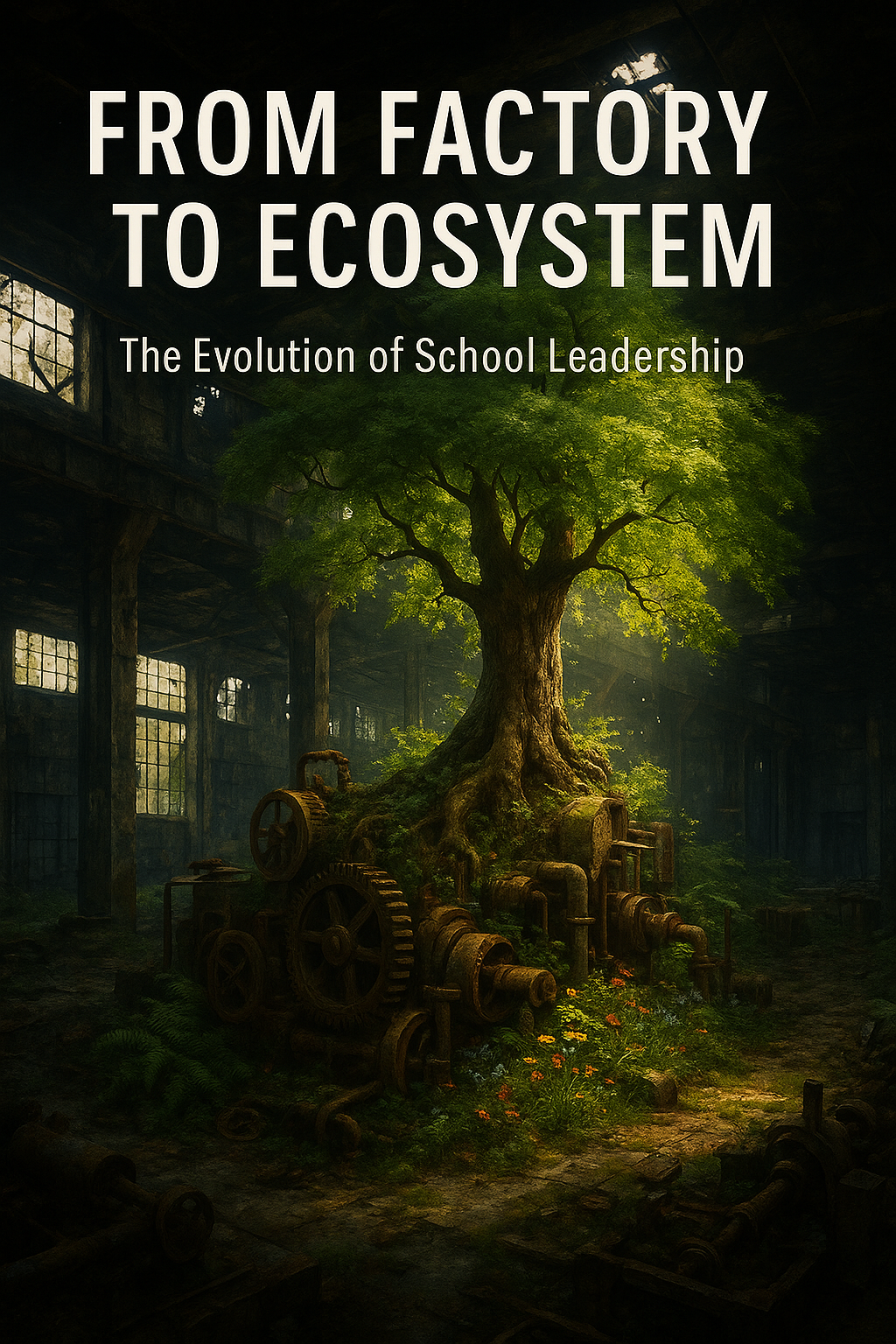From Factory to Ecosystem: The Evolution of School Leadership
That little article, "The Head Gardener, Not the Mechanic," struck a chord. The comments and messages revealed a shared frustration: a feeling that our schools are often led using an outdated playbook. We sense that the top-down, command-and-control approach is ineffective, but we struggle to articulate a compelling alternative.
The reason the "gardener" metaphor resonates is that it points to a more accurate and powerful way of understanding our schools: as Complex Adaptive Systems (CAS). To move forward, we must first understand the profound difference between this model and the traditional, industrial one that still dominates our thinking.
The Fundamental Divide: Open vs. Closed Systems
At the heart of this shift is a basic distinction in systems theory.
A school is, by its very nature, an open system. It is flooded with energy, information, and influences from the outside world. To treat it as a closed system is to ignore reality. As curriculum theorist William E. (Bill) Doll, Jr. argued, we must move away from a "modernist" framework of predictability and control in education and toward a "post-modern" perspective based on "transformation, change, and process" (Doll, 1993).
Schools: Ecosystem vs. Factory
When we apply these system principles to education, the contrast becomes even starker. Our traditional industrial model views a school as a factory, a type of closed system. The emerging, more accurate model views it as an ecosystem.
The factory model seeks to control variables. The ecosystem model seeks to nurture conditions. Researchers Brent Davis and Dennis Sumara (2006) perfectly capture this shift, stating that in complex systems like classrooms, "knowing and knowledge are enacted rather than possessed," and the teacher's role is to "participate in the emergence of knowing."
The Magic of Emergence: Where the Real Growth Happens
Perhaps the most beautiful and compelling concept in complexity theory is emergence. This is the phenomenon where a system as a whole exhibits properties and behaviors that are not present in its individual parts. These properties emerge from the complex web of interactions within the system.
You can't predict emergence by studying a single agent. The wetness of water isn't present in a single H₂O molecule; it emerges from their collective interaction. As complexity theorist Margaret Wheatley (2006) writes, "In a web, the potential for influence lies in the richness of the connections. The more connections, the more likely that the system will learn, adapt, and evolve."
What does emergence look like in a school?
You cannot mandate it. You can only create the conditions for it to arise. Here’s what it might look like:
· A Culture of Kindness: This doesn't emerge from a poster campaign. It emerges from the thousands of daily micro-interactions where kindness is modeled and celebrated. It’s a property of the whole community.
· A Collaborative Teacher Team: This emerges when teachers are given time, trust, and a compelling shared problem to solve. The synergy is the emergent property of their relationship.
· Student-Led Initiatives: These emerge when students feel empowered and their curiosity is valued. The leadership skills demonstrated are emergent properties of that empowering environment.
This requires a curriculum, as Doll proposed, that is rich, recursive, relational, and rigorous—one that allows for spontaneity and the emergence of understanding.
The Leader's New Role: Cultivating the Soil for Emergence
If our goal is to foster vibrant, adaptive, innovative schools, our leadership must shift accordingly. The leader is not the master mechanic who fixes the machine. They are the head gardener who tends the ecosystem.
This means:
1. Focusing on Conditions, Not Commands: Invest in building trust, psychological safety, and clear, shared values.
2. Nurturing Connections: Create structures that encourage rich interactions.
3. Embracing the Messy Middle: Understand that learning and growth are non-linear.
4. Looking for Patterns, Not Just Outcomes: Pay attention to the culture that is emerging. Is there energy? Curiosity? Respect? These are your true metrics of health.
The future of education isn't about building a better factory. It's about learning to steward a more resilient and vibrant ecosystem. It’s time to put down the blueprint and pick up the gardening tools. The most beautiful growth is yet to emerge.
---
References & Further Reading
· Davis, B., & Sumara, D. (2006). Complexity and Education: Inquiries into Learning, Teaching, and Research. Lawrence Erlbaum Associates.
· Doll, W. E. (1993). A Post-Modern Perspective on Curriculum. Teachers College Press.
· Doll, W. E. (2012). Pragmatism, Postmodernism, and Complexity Theory: The "Fascinating Imaginative Realm" of William E. Doll, Jr. (D. Trueit, Ed.). Routledge.
· Morrison, K. (2008). Educational philosophy and the challenge of complexity theory. Educational Philosophy and Theory, 40(1), 19-34.
· Wheatley, M. J. (2006). Leadership and the New Science: Discovering Order in a Chaotic World. Berrett-Koehler Publishers.


